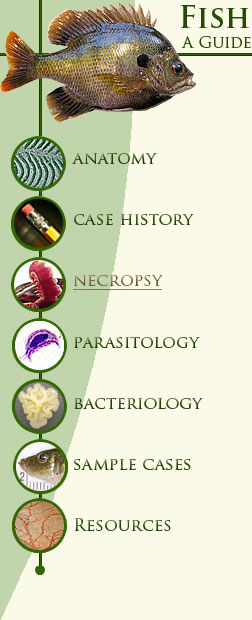At the end of the necropsy, dispose of the carcass(es) in labeled, double plastic bags. Be sure to properly dispose of any "sharps," such as razor blades scalpels and needles. Be sure to have completely filled out all questions on your necropsy work sheet, including skin and gut scrape, results, gill biopsy results, hematocrit and serum protein levels, and all organ system observations. Make sure that all containers of fixative are securely closed and properly labeled.
If there were several sample pieces of a particular organ which appeared normal, and one which had a remarkable observation, you might want to separate that piece of tissue by putting it into a labeled histology cassette inside the fixative container, or in a separate, labeled container. This way, you will be able to keep track of that tissue, through the histological processing, and on the glass microscope slide.
|

 Necropsy: Completing the Necropsy
Necropsy: Completing the Necropsy